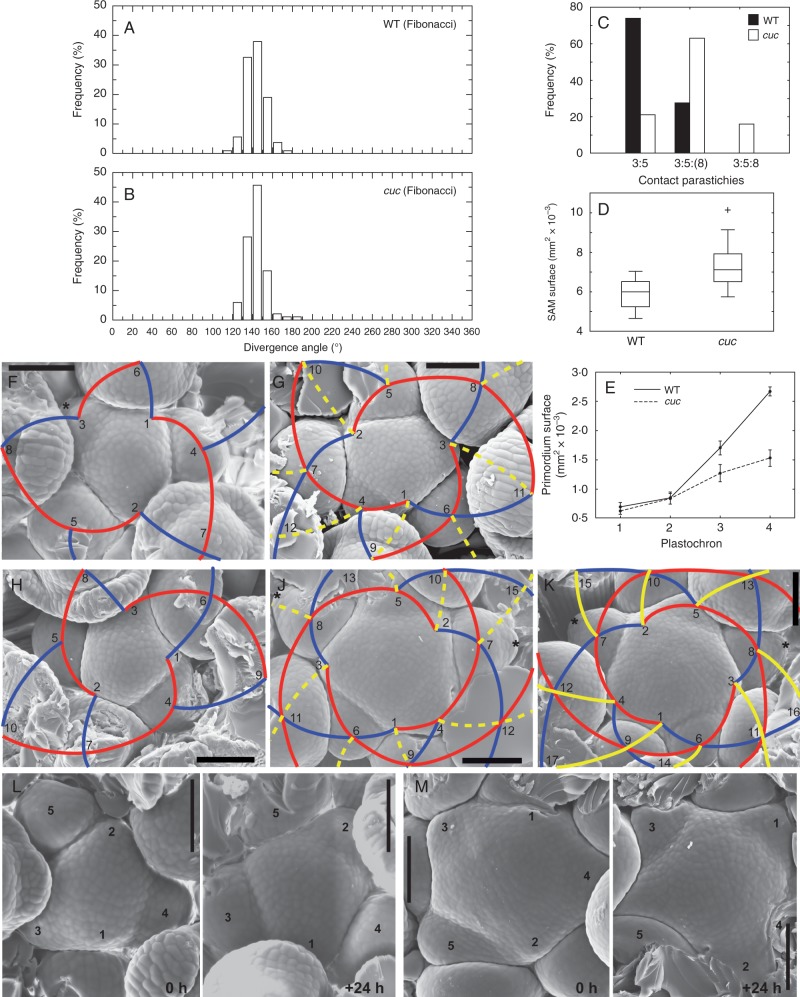Fig. 3.
Phyllotaxis at inflorescence shoot apices. (A and B) Histograms of divergence angles in WT (A) and cuc2 cuc3 (B) shoot apices. (C) Frequency of different contact parastichy numbers in the WT and cuc2 cuc3. (D) Surface areas of SAMs in the WT and cuc2 cuc3. Boxplots are as in Fig. 2F. (E) Surface areas of primordia of different plastochron age (mean ± s.e.m.) in the WT and cuc2 cuc3. (F–K) Contact parastichies drawn on SEM micrographs for exemplary apices of the WT (F and G) and cuc2 cuc3 (H–K). Families of three parastichies are drawn in red, five in blue and eight in yellow. Less apparent parastichies are in dashed lines. Asterisks label rudimentary bracts. Flower primordia are numbered according to their plastochron age. (L and M) Consecutive replicas of WT (L) and cuc2 cuc3 (M) shoot apices taken at a 24 h time interval. Flower primordia are numbered according to their plastochron age at time 0 h in order to facilitate comparison between the two replicas. Scale bars = 100 μm.

